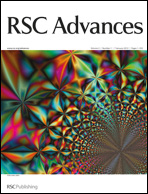Li3MxV2−x(PO4)3/C (M=Fe, Co) composite cathodes with extended solubility limit and improved electrochemical behavior
Abstract
A first attempt has been made to prepare Li3MxV2−x(PO4)3/C (M=Fe, Co) composite solutions by adopting a novel oxalic dihyrazide assisted


 Please wait while we load your content...
Please wait while we load your content...